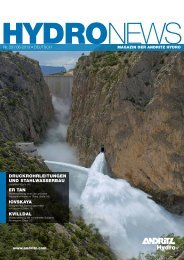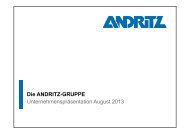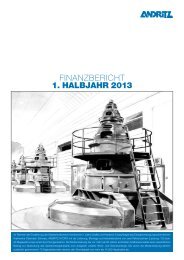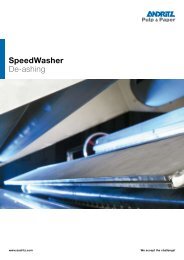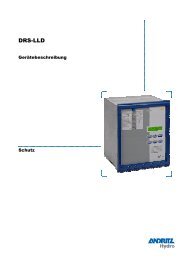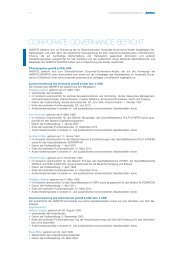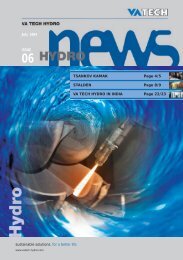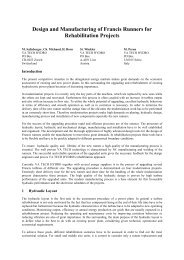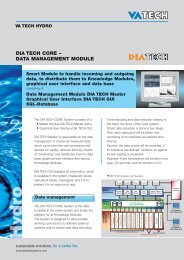In March 2012 ANDRITZ HYDRO - ANDRITZ Vertical volute pumps
In March 2012 ANDRITZ HYDRO - ANDRITZ Vertical volute pumps
In March 2012 ANDRITZ HYDRO - ANDRITZ Vertical volute pumps
Create successful ePaper yourself
Turn your PDF publications into a flip-book with our unique Google optimized e-Paper software.
04 <strong>In</strong>troduction<br />
02 <strong>HYDRO</strong>NEWS<br />
New projects<br />
Dear business friends<br />
One-fifth of global power is<br />
generated from renewable<br />
energy sources. Approximately<br />
85% of this power is generated<br />
from hydroelectric sources,<br />
which are therefore by far the most<br />
important source of renewable energy.<br />
According to expert estimates, only<br />
about one-third of the world's potential<br />
hydroelectric power is currently used.<br />
Although numerous new hydroelectric<br />
power plants are presently under<br />
construction or in the planning phase,<br />
there is still substantial potential for<br />
the future.<br />
At the same time, additional investment<br />
is required for modernization, rehabilitation<br />
and capacity improvements<br />
to existing power plants. About onehalf<br />
of the equipment used in hydroelectric<br />
power plants around the world<br />
is more than 30 years old. <strong>In</strong> North<br />
America, 43% of all existing plants are<br />
older than 40 years, and the corre-<br />
sponding figure in Europe is 37%. The<br />
market for modernizing, rehabilitating<br />
and increasing the capacity of installed<br />
hydroelectric power plant equipment is<br />
therefore concentrated primarily in<br />
Europe and the United States, but this<br />
need will also increase significantly<br />
in other regions.<br />
Africa is one region that requires construction<br />
of new power plants and<br />
refurbishment of existing hydroelectric<br />
plants. <strong>ANDRITZ</strong> <strong>HYDRO</strong> has been<br />
active in this region for more than<br />
100 years and has supplied more than<br />
50% of all installed turbines. Examples<br />
of <strong>ANDRITZ</strong> <strong>HYDRO</strong>‘s present-day<br />
modernization and rehabilitation successes<br />
in Africa include Drakensberg<br />
in South Africa, Kindaruma in Kenya,<br />
Edéa in Cameroon and <strong>In</strong>ga 2 in the<br />
Congo. More powerful new plants are<br />
planned in order to satisfy a significant<br />
ongoing demand for energy in Africa.<br />
Projects such as those in Assiut, Egypt<br />
or Ruacana, Namibia are good examples<br />
of such efforts. Continuing de-<br />
M. Komböck W. Semper H. Heber<br />
mand for small hydroelectric plants<br />
that will contribute to a decentralized<br />
power supply will also improve the<br />
even distribution of power in Africa in<br />
the long term. New technologies are<br />
developing well globally. The construction<br />
of the world‘s largest matrix power<br />
plant in Ashta, Albania is proceeding<br />
on schedule. The first turbines have<br />
already undergone a test run.<br />
The next generation of tidal turbines,<br />
the HS1000 developed by <strong>ANDRITZ</strong><br />
<strong>HYDRO</strong> Hammerfest, is being tested<br />
in EMEC in Scotland under extreme<br />
environmental conditions.<br />
The growth of the global hydroelectric<br />
market, our highly motivated employees,<br />
the continuous development of<br />
our technologies and the trust that our<br />
customers place in us make us wellequipped<br />
to meet the challenges of the<br />
market.<br />
Sincerely yours,



